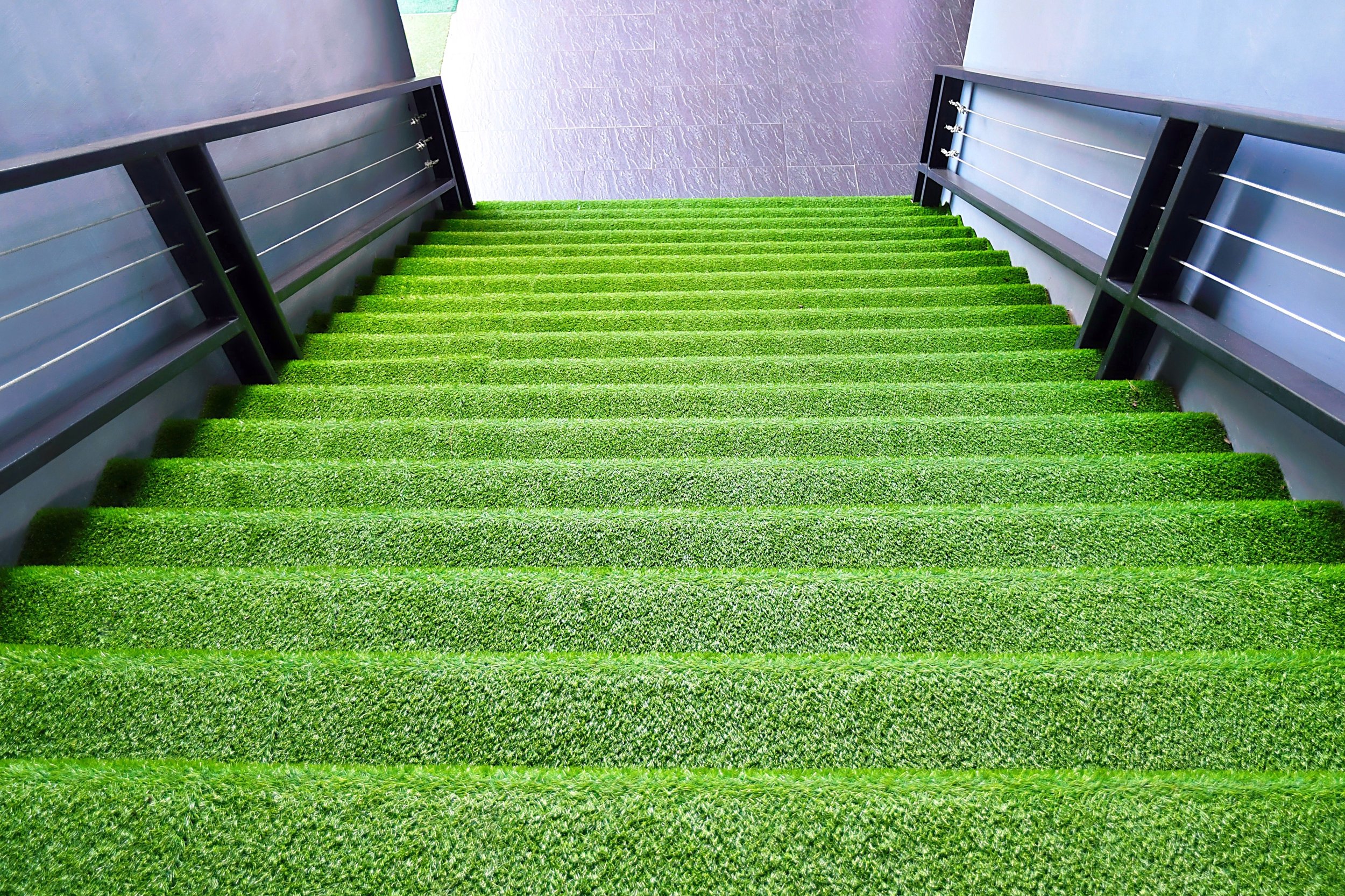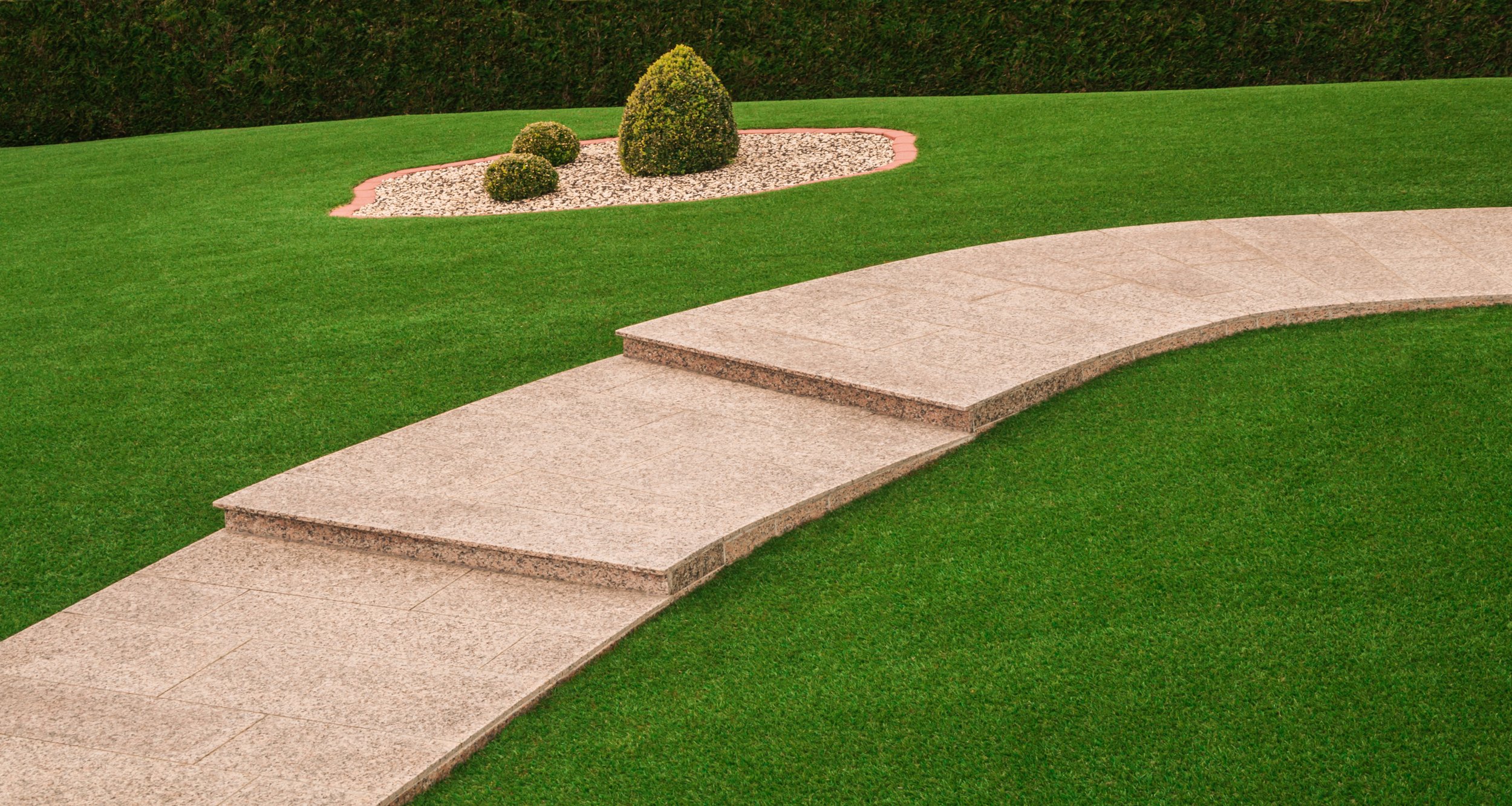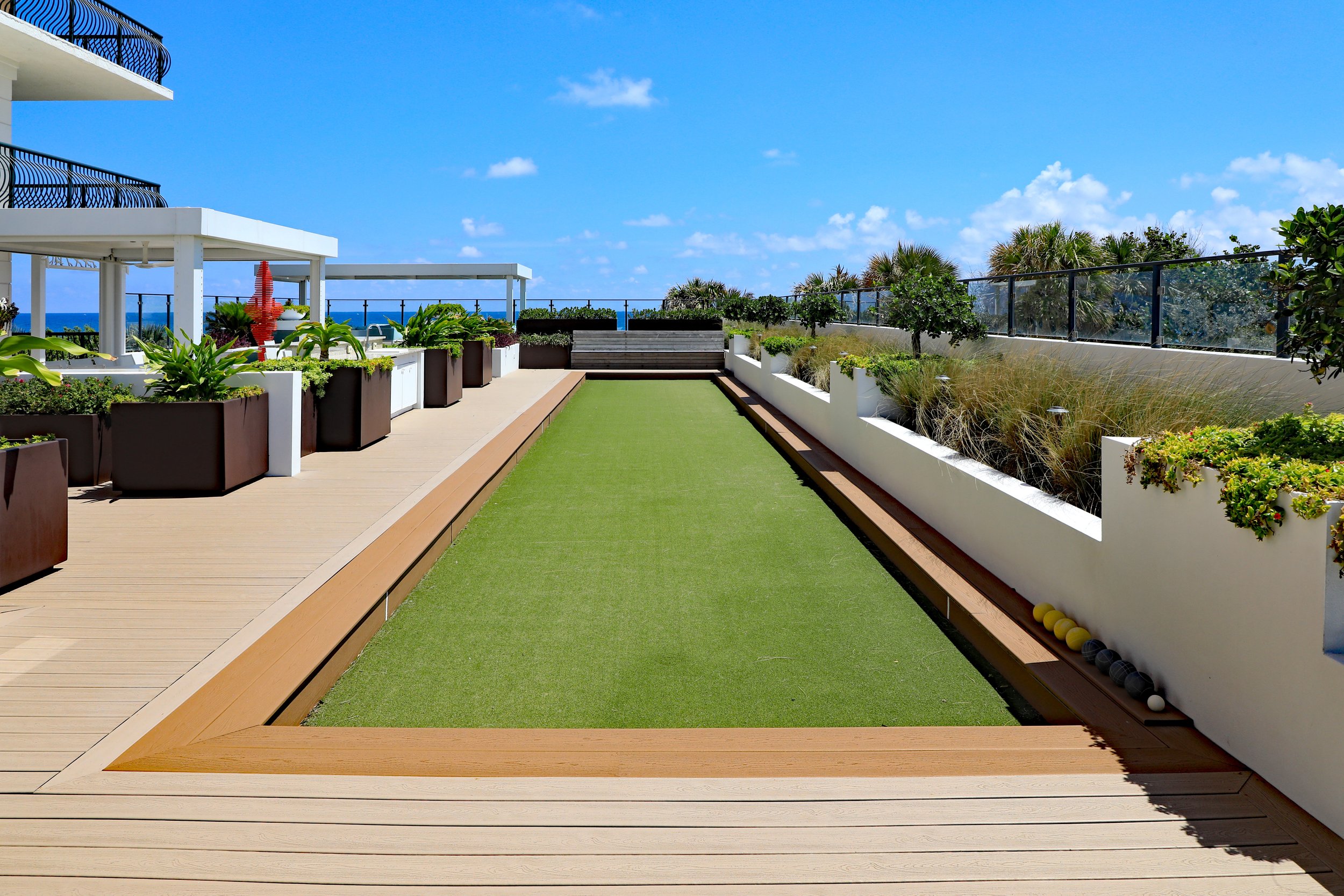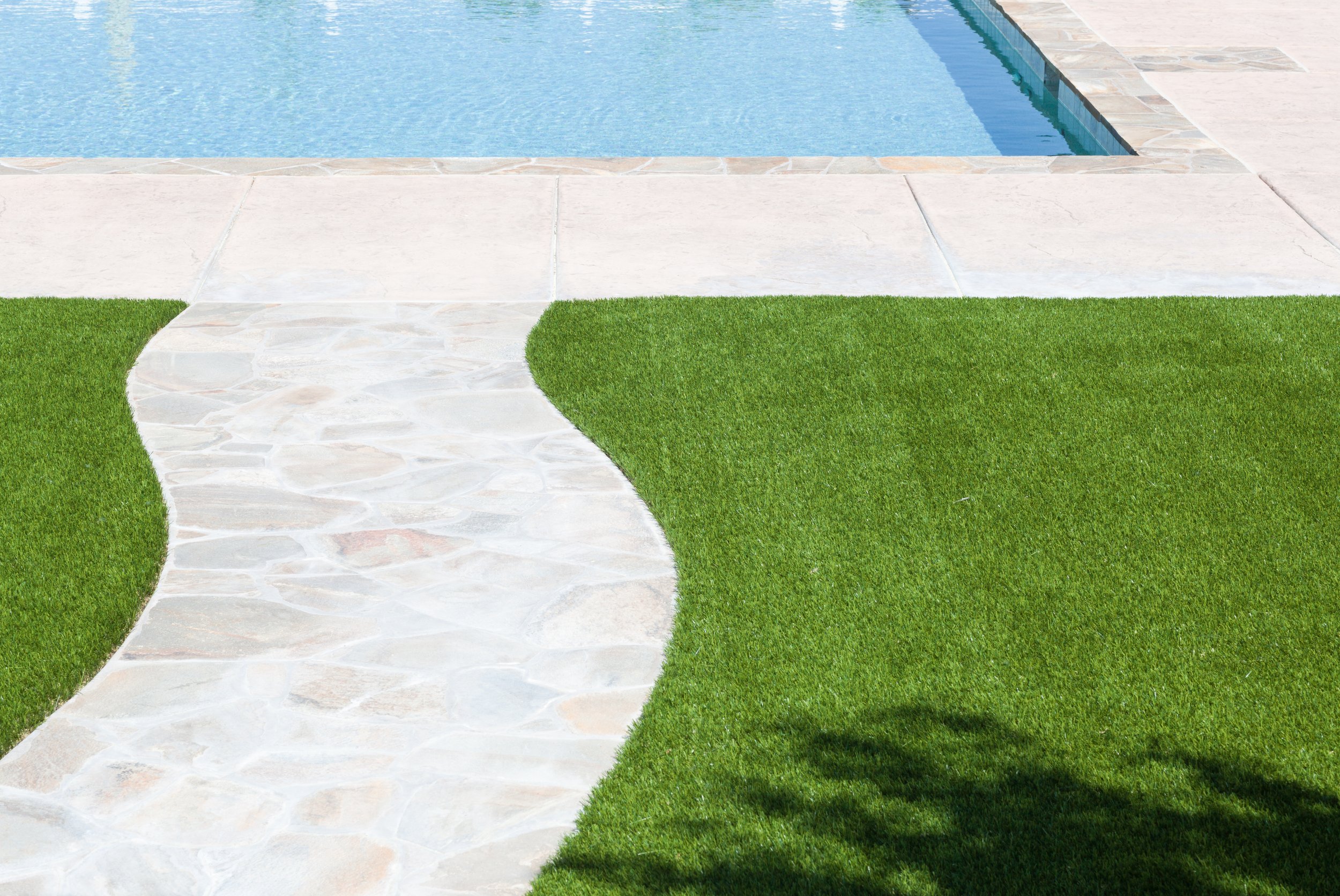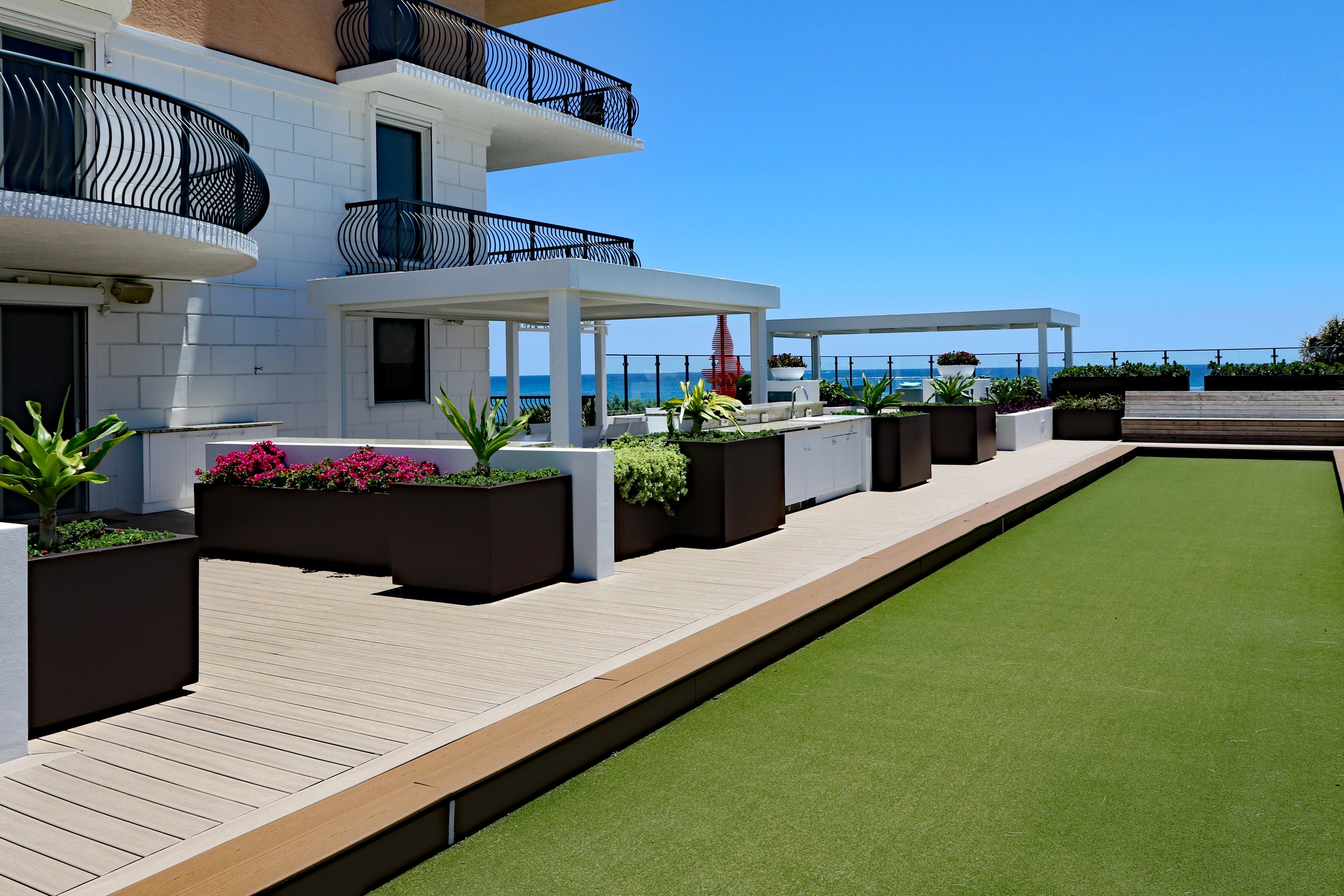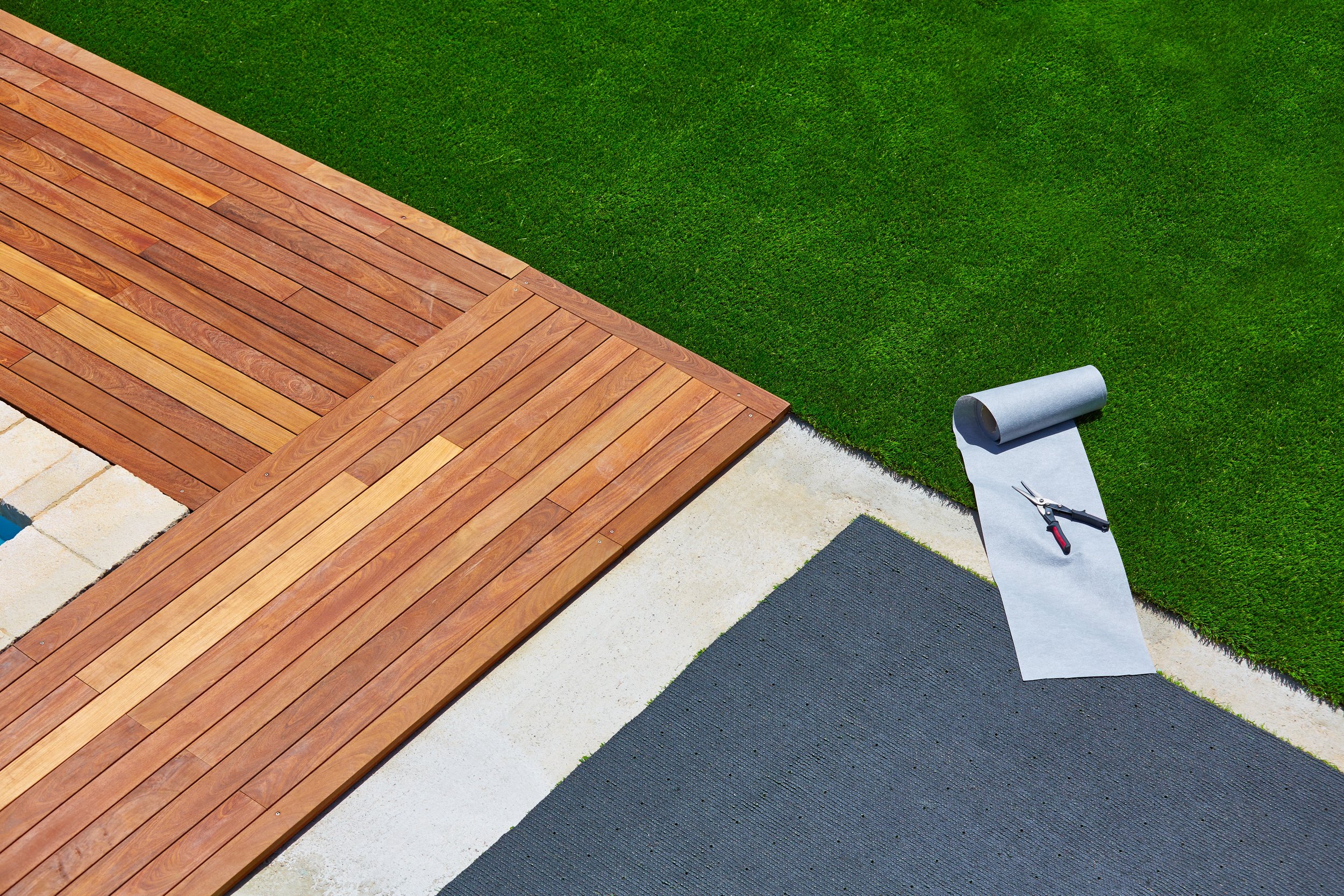
Artificial Turf
Made up of materials advanced in antibacterial performance and heat reflection, our artificial grass products are designed to hold up well against constant use and maintain their appearance with minimal maintenance.
Upgrade Landscape
A well understood expectation in property management is the perfectly green lawn that is lush year-round. However, in most regions and individual circumstances, the resources necessary to maintain this standard are extremely limited, with property owners forced to seek unwanted alternatives or suffer lost time and money by sticking with natural sod. Artificial grass, having gone through several decades of evolution in manufacturing, provides landscape designers greater flexibility and presents low maintenance, cost-effective solutions for those desiring the aesthetic of a green lawn.
Versatility & Longevity
Natural sod has a number of limitations, such as insufficient sun exposure, rodents and pests, weeds, or drought, as well as the attention and availability of someone to maintain it. By applying artificial turf in landscape design, there’s greater versatility in filling negative space, creating hardscape transitions, and leading the eye to an architectural focal, complete with the bonus of artificial grass’ longevity.
Increased Property Value
Artificial grass is powerful leverage in estimating the value of a property; a practical, affordable green solution that feels like an indulgence. With turf’s average life expectancy of 20 years and our transferable lifetime product warranty, buying and selling property with artificial grass is a win for all parties involved.
Why Go Green for Green?
Eco-Friendly
Artificial grass provides a solution for all – including those seeking alternatives to natural sod that also positively impact the environment. For example, EcoCell is a primary component in Purchase Green artificial grass backing systems and derives from a natural vegetable oil pressed from castor beans – an ingredient commonly found in food preservatives, medicine, skincare, and hair care. Making up 25% of the product’s secondary coating solution, EcoCell is a sustainable, bio-based additive that allows us to replace a percentage of nonrenewable petroleum-based oils that would be used otherwise, answering to the environmental impacts of manufacturing by substituting a nonrenewable resource with a sustainable one – earning product certifications such as LEED.
Recyclability
A popular misnomer is the mislabeling of turf being non-recyclable when artificial grass can in fact be fragmented and the materials recycled. Services and tools are available to those wanting to break down their turf, as well as many artificial grasses having been specifically constructed for the ease of recyclability.
Water Conservation
Synthetic turf has a measurable, positive impact on the environment. According to the STC, “A typical grass sports field requires between 500,000 to a million gallons of water or more each year”, and the U.S. Environmental Protection Agency (EPA) notes that the average American family of four uses 400 gallons of water a day. With water shortages and droughts on the West Coast, it is important to consider all methods to help reserve our resources.
Xeriscaping
Many homeowners elect to transition from natural sod to a xeriscape design instead, but often find themselves unsatisfied with desert-scapes and are left wanting more green. In lieu of – or even in addition to rocks and sparsely arranged drought-tolerant plants, artificial grass lends greater flexibility in landscape design while still minimizing the need for water. Add color to your curb, whether you’re filling negative space between pavers or covering a sloping hillside, turf’s got you covered.
Design Consideration
Reflective Surfaces
Before installing artificial grass, it is imperative to identify potential risks of localized heating – the result of reflective materials catching and redirecting sunlight onto surfaces below, creating temperatures that the surface material cannot withstand and causing it to deform. Common culprits of localized heating on artificial grass are: glass outdoor furniture, glass doors, windows, vinyl/white fences, and large metal objects like cars and BBQ’s. Purchase Green recommends using turf samples to test potential areas of concern by placing them in the path of nearby reflective surfaces and observing.
Grain Orientation
Due to the way rolls of turf are stored, most blade types will end up leaning toward one direction, and this grain will impact the aesthetic of an installed grass. The general rule of thumb is to orient pieces of turf so that the grain of the blade is leaning toward the main vantage point. For example, if you are installing in a front yard, orient the blades toward the street; if you are installing in a backyard, orient the blades toward the property. However, this is optional. Oftentimes installers will disregard this rule if there is a more cost-effective layout to reduce material cost, as turf roll widths are generally unalterable and typically come 13.1 feet or 15 feet wide.
Balancing Style & Function
When shopping for artificial grass, much of what influences the decision is personal preference – such as color combination and the feel of the grass; and while those features are important, there are additional specifications that should be appropriately considered, too, to maximize the product’s lifespan once installed and in use. A grass’ pile height, density, and blade shape will heavily impact its ability to withstand premature wear and tear, so if an application is anticipated to have regular or heavy foot traffic, be sure to consult with your Purchase Green product expert to match the project’s needs with the right turf for the job.
Securing Perimeters
What is important to know about perimeters is that they are the most susceptible to wear over time and should be secured appropriately per the anticipated foot traffic of the application. For example, securing the perimeter line with 5” non-galvanized nails every 3” will certainly do the job, but is only recommended for light traffic areas. On the other hand, for higher traffic applications requiring a more robust hold, perimeter boards can be installed as reinforcement – such as a landscape Bend-a-Board or subgrade Bend-a-Board. These options also add an aesthetic value, with landscape Bend-a-Board providing clean and defined perimeter lines and subgrade Bend-a-Board giving the look of a more natural, manicured edge.
Quality Installation
Quality assurance does not stop at turf selection, but continues into the applied installation methodology of the contractor. Artificial grass installations require a keen and careful eye for detail and an understanding of the material. An installation done by a contractor without the necessary experience will quickly show signs of degeneration, even if a premium grass product was used. Purchase Green recommends learning at least the basics of the installation process so that you are prepared to thoroughly consult with contractors during estimations.
